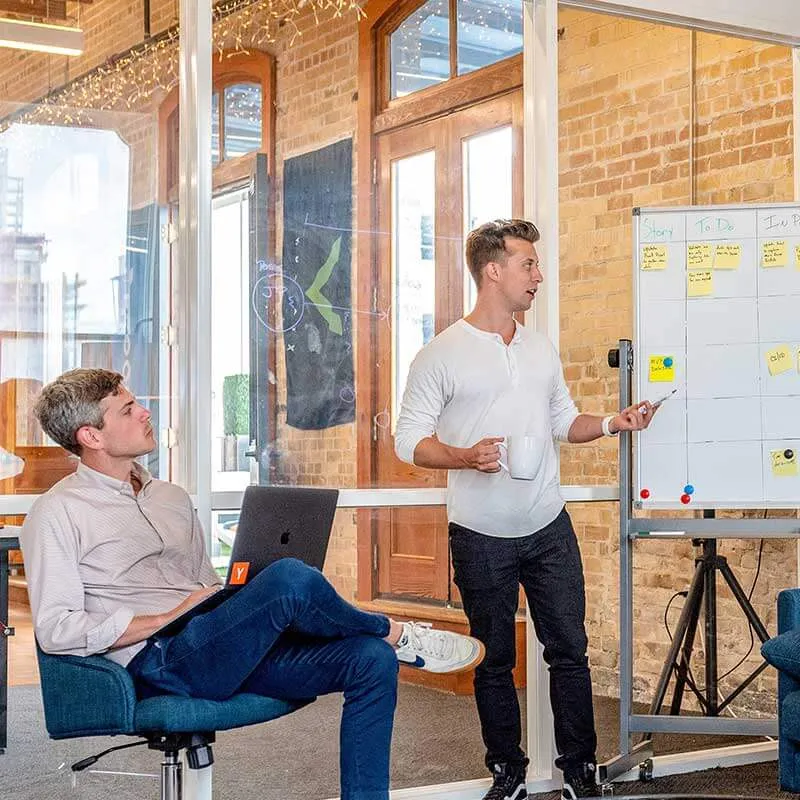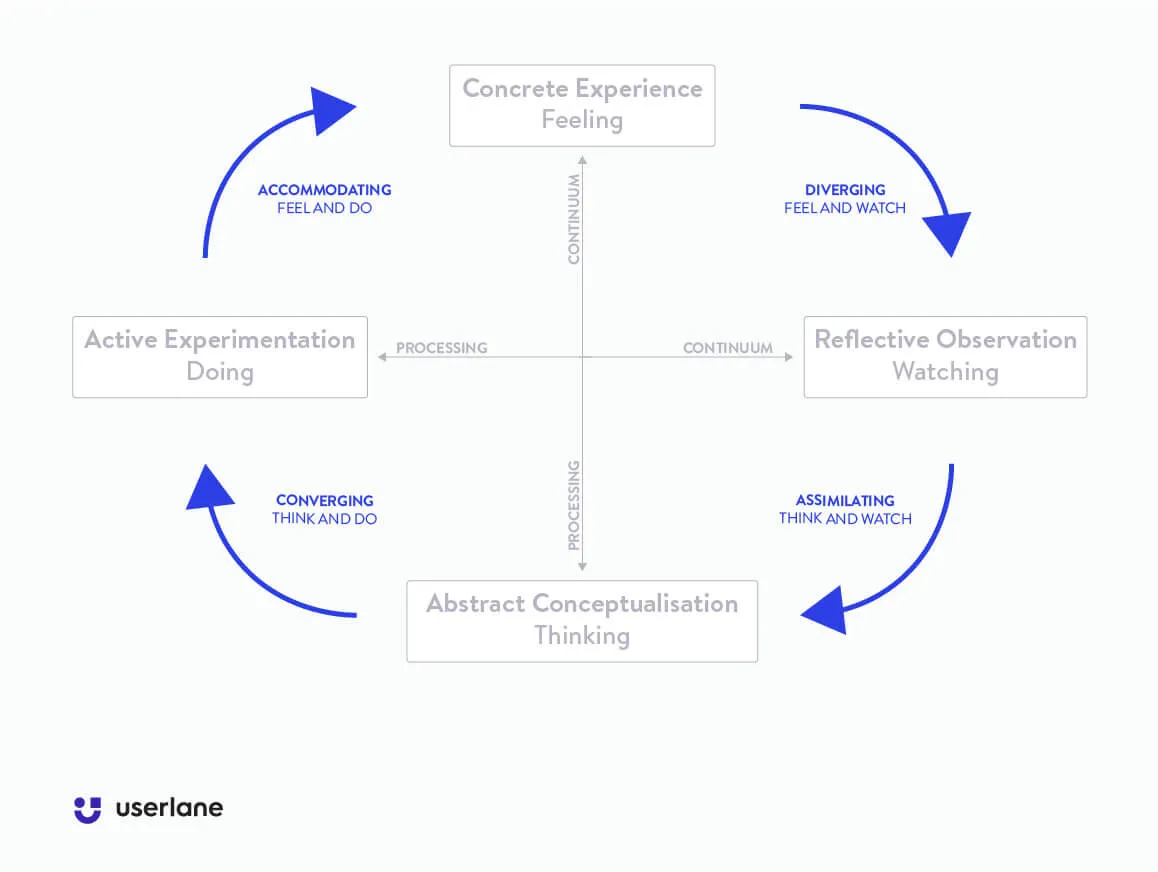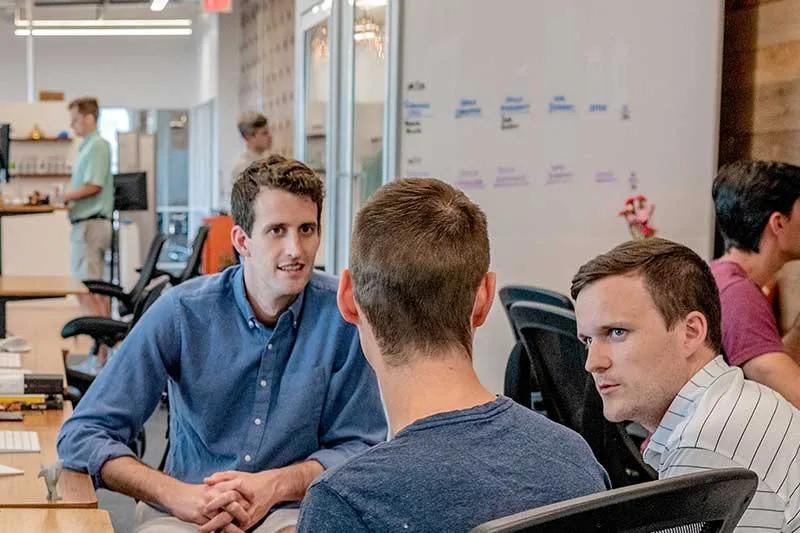How to Harness Experiential Learning to Advance Training

‘I hear, I know. I see, I remember. I do, I understand.’ – Confucius (551-479 BC)
I always find it fascinating how philosophers back in the day (way, way back in the day) came up with such profound theories, concepts, and philosophies using little more than their minds (what I mean is, they didn’t have access to what we have today, so imagining a life before tech and Google came along to help us is simply mind-blowing).
I opened with this saying by Confucius because it captures the essence of this article. In some of our past few blog posts on Learning and Development, we’ve specifically been focusing on different types of learning and learning styles. Quick quiz to see if you’ve been following and reading our posts (because we know you have):
- What is adaptive learning and what are its main benefits?
- What is the VARK model of learning?
- What technology can be implemented to maximize learning for aural and kinesthetic learners?
Okay, these are pretty simple questions … but this was just a warm-up to prepare you for our next topic: experiential learning, which is essentially learning by doing (I do, I understand in the words of Confucius).
I’m pretty sure you have a good understanding of what this type of learning is already (considering that practically all learning is experiential in some way), but I’m going to dig a little deeper and present some data and facts, what companies have put experiential learning to good use, and how you can incorporate experiential learning creatively in your own Learning and Development programs.
So without further ado, let’s get right to it.

Table of Contents
An Introduction: Definition and History of Experiential Learning
Let’s start off with the definitions (this section might contain more words and fewer numbers, so bear with me – I’ll get to the really cool facts and stats a little later!).
Experiential learning has its roots in philosophy. In 1787, renowned German philosopher Immanuel Kant argued that knowledge is constructed through both rationality and experience. Just over a century later, American philosopher John Dewey further explored the relationship between learning and experience and later argued that experiences can only be defined as educative if they lead to growth (both intellectually and morally), if they have a positive effect on a community, and if the experiences led to positive behavioral change.
Taking it to more recent times, Linda Lewis, vice president of corporate education for Travelers Companies, and Carol Williams, associate dean of the School of Continuing Education at Eastern Connecticut State University, define experiential learning as learning from experience or learning by doing (side note: we wrote a piece on how to bridge the learning-doing gap, shame on you if you haven’t read it ;)). And to continue in Lewis’ and Williams’ words:
‘Experiential education first immerses learners in an experience and then encourages reflection about the experience to develop new skills, new attitudes, or new ways of thinking.’
But, scholars Steve Chapman, Pam McPhee, and Bill Proudman decided to take things a little further by expanding on the above definition and including a list of characteristics that need to be present in order to qualify a learning activity or method as experiential. These characteristics are:
A Mixture of Content and Process
In other words, there needs to be a balance between experiential learning activities and the underlying theory.
Absence of Judgement
This means that as an instructor, you need to establish a safe psychological space in which your students can learn through their own process of self-discovery.
Engagement in Purposeful Endeavors
Experiential learning is a personal process meaning that students become their own teachers. This means that learning activities need to be relevant to the learner.
Focusing on the Bigger Picture
Learners need to partake in activities that help them connect with the real world – i.e. they need to see the relevance in what they are doing and how this can be applied to their everyday life (either personally or professionally).
Reflection
Experiential learning is a process of doing and reflecting. The reflection part is crucial in helping the learner see, understand, and apply what they’ve learned from a specific activity.
Emotional Investment
Remember when I spoke about our article on bridging the learning-doing gap? In there, we also spoke about using emotional aspects to engage the learner. Emotion also leads to motivation. A learning activity must be meaningful in some way to the learner, and they need to be fully immersed in the experience – they should want to do it, not simply feel like they are being forced to do it.
Re-assessing Values
Experiential learning activities (if done correctly within a safe space that promotes self-discovery) should help learners analyze their way of doing things and their values, and, in many cases, even be a catalyst for change in the way they think, do, and see things. Bonus: experience-based learning is pretty darn effective because it helps form the foundation of lasting behavior change.
Forming Meaningful Relationships
Learners need to be able to form relationships with themselves, with their instructors, and with the learning environment they are in.
Out of the Comfort Zone
Learning is often enhanced when a learner steps out of their comfort zone in some way.
So, if these nine characteristics are present in a learning activity, then the activity may be defined as experiential.
But if this was all tl;dr, then just know that the easiest definition of experiential learning is learning by doing. Simple as that.
Learners (in our case, employees) should, therefore, be able to manage their own learning, and the instructor (in our case, you as the L&D professional) often places most of the learning responsibility onto the student. You can, therefore, update your Learning Management System (depending on your Learning Management System requirements) to include activities that promote experiential learning.
Essentially, employees become responsible for their own learning: they are not told when or where to do it, and it doesn’t necessarily need to involve textbooks or materials to study. The employee has the power to identify what he/she needs to or wants to learn and then acquire such knowledge for themselves. And with the rise of remote workers and a globalized workforce, employees need to start taking more responsibility for their learning and career development.
Experiential Learning Process: Kolb’s Theory
In 1984, Professor David A. Kolb developed his own theory of experiential learning, which states: ‘Knowledge results from the combination of grasping experience and transforming it.’
Research conducted by Kolb emphasizes that experiential learning has four elements, namely concrete experience, reflective observation, abstract conceptualization, and active experimentation – all of which form the experiential learning cycle, as is depicted in the image below.

Breaking this down:
Concrete Experience
The learning cycle begins with assigning an individual/team a task, where everyone is actively involved in doing and successfully completing the task.
As an L&D professional, you would use ice breakers, team games, interactive discussions and debates, and problem-solving in this phase.
Reflective Observation
This stage centers on a reflection of what has been done and experienced throughout the task. This is the time for questioning and communicating with others involved in the task.
Here, activities you could use include asking for observation, giving feedback to other participants, having breaks, filling in reports, etc., and having time out/ quiet times.
Abstract Conceptualization
This involves making sense of what happened via interpretation of what happened, making comparisons, and using previous knowledge to explain what has happened.
This phase requires the use of presenting theories, models, data, and facts.
Active Experimentation
This is about putting what has been learned into practice. It is important that what has been learned carries some sort of relevance – if the task has no meaning/ relevance and cannot be connected in some way to the real world, then knowledge retention is unlikely.
Here, you can ask employees to discuss case studies, do role play, or discuss how they could apply what they’ve learned in a real-case scenario
Weighing it Up: Experiential Learning Benefits
Now that we’ve gotten the definitions and characteristics out of the way, it’s always good to look at the benefits of a specific form of learning – and experiential learning just so happens to have a lot of them.
- It mitigates the forgetting curve and improves the learning experience dramatically because it uses critical thinking, problem-solving, and decision making.
- It provides a safe learning environment as it uses simulations to depict real-life scenarios and challenges. Simulations create a safe space for experimentation, fun, making mistakes, and applying this knowledge to the real world.
- It bridges that all-important learning-doing gap.
- It leads to lasting behavioral change.
- It increases employee engagement levels via interaction and learning with and from each other. Employees also feel empowered because they are actively problem-solving and achieving outcomes.
- As it involves learning in the flow of work, experiential learning is ideal for developing strong leaders and for creating training programs that revolutionize the way employees learn.
- It is personal and effective, has a positive impact on emotions and self-motivation, leads to knowledge retention, enables knowledge transfer, and delivers a solid ROI.
- It is personalized and can happen anytime, anywhere thanks to technology and the use of portable devices.
- It helps employees become more agile and flexible.
- It lets employees fail fast (and furious), putting them in the driver’s seat and allowing them to take control of their learning (see what I did there?). And fast failure equals fast learning, which equals greater productivity and a work-ready workforce. #winning
- It makes learning fun, which can definitely motivate employees to take part in training initiatives.
- It creates a more engaged workforce and reduces employee turnover.

Let’s Get Going: Some Experiential Learning Activities and Ideas to Try Out
So how can you incorporate experiential learning in your organization or in your L&D training programs? Here are some innovative training ideas and activities you can try out to get you started!
Team Building
Pretty much all team building activities are experiential in some way or another, and there are SO many team building activities that you can try, whether on-site or off-site. I repeat the word ‘fun’ a lot in this post because experiential learning is most effective when fun is involved.
Here are some examples of team building activities that are fun, and are focused on experiential learning:
- Treasure Hunts using iPads, for example, to solve challenges and discover items by working in a team. The whole hunt is highly gamified and employees need to solve challenges that are linked to specific skills, goals, and outcomes.
- Colleagues are the number one thing people love about their job, so leverage this! Their recommendation? Team cooking. Clear communication, willingness to cooperate, ability to listen – they’re all on the menu and can provide valuable insight on how colleagues can work together in the workplace by leveraging each of their unique capabilities and ways of doing things.
- Another interesting example provided by TinyPulse is getting a team to lead horses around a corral. The horse only moves if you take the reins and gently walk the horse, but (of course) not everyone knows this. This is a great team building activity for leadership and non-verbal communication (and also, you’ll need to have access to horses).
Roleplay
Who doesn’t like a bit of role-playing now and again?! Role plays can be as simple as having a facilitator and an employee working together on a phone call from a difficult customer. The facilitator can pretend to be the customer, who then makes the employee’s job very difficult with demands, unreasonable requests, and a bad attitude. The facilitator, by presenting various challenges and scenarios, can then give feedback, advice, and guidance. (Tip: Always try to add an element of fun to the roleplay!)
Experiential learning and corporate training company, Eagle’s Flight, suggest using an activity called ‘Coach the Builder’.
With this activity, employees are divided into groups (at least four people per group), and each group is given two sets of blocks (like Legos). Each group member is given a role: Leader, delegator, builder, note-taker. As the facilitator, you’ll have to make a sample object (like a house) beforehand, and then show this sample to the leader of each group and no one else.
Here’s how it works: Start a ten-minute timer. The leader tells the delegator how to build the sample object. And then the delegator has to tell the builder how to build the object by repeating the leader’s instructions. The delegator can go back and forth between the leader and builder as many times, and the delegator is not allowed to see how the builder is constructing the object.
After ten minutes, the leader will compare the original with the replica. The note-taker will provide feedback, and everyone will discuss what went well, what didn’t, and what can be improved upon. This is a great exercise for communication, relying on and trusting others, and working well in a team.
Simulations with Virtual Reality
Simulations are great because they allow employees to fail safely. It doesn’t matter if they make mistakes or don’t perform well – their job is not on the line during training, so they’ll have more confidence to be explorative and try new things without the fear of failing.
And bonus: Simulations can give you great insight in terms of stats and data. You can easily see what choices employees make during training and provide valuable feedback, thereby helping them figure out what skills they’re lacking, what skills they can improve upon, and what skills they’re excelling at.
Some awesomely cool examples of how simulations work using Virtual Reality:
- BP uses VR training for start-up and emergency exit procedures at its oil refinery in Hull, UK. Employees can easily learn from any errors made in the simulation so as not to repeat the same ones in real life (errors which could be very, very serious).
- ExxonMobil uses VR for safety training, which teaches employees working in the oil and gas field very valuable lessons. An example of one of these fully immersive simulations is where employees, who are virtually transported to the loading dock of a liquefied natural gas tanker, spend some time dealing with different scenarios. This, naturally, allows them to hone their skills and sharpen their instincts, which makes for an all-round safer working environment.
- KFC (Yup! I mean Kentucky Fried Chicken) is currently developing a virtual employee training escape room where employees can learn how to – you guessed it! – make KFC’s world-famous chicken. The simulation will include good ol’ Colonel Sanders and other cool gamification techniques.
- UPS trains its student delivery drivers using VR headsets that display a simulation of roads and hazards. Pretty cool, huh?
The key to experiential learning, however, is to also make learning and development programs fun and keep employees interested in solving challenges. The more fun and gamified an experience is, the more engaged employees will be – and they’ll even have a stronger desire to overcome challenges and solve problems.
Focus Groups and Case Studies
Focus groups and case studies are a great way to involve employees in an active and engaging discussion. Case studies allow employees to think critically about problems and then work together with colleagues to solve them. Simply asking the question, ‘What would you do in this situation’ is always a good starting point for initiating critical thinking and engaging discussion. By working together to solve problems and think about case studies, employees engage more with each other, which deepens their bond. As Exec Coach Kelly Burnes says, ‘Those involved all grow, engagement increases, and ownership of results deepens. The value of that hidden benefit will be felt long after training … ends.’
Gamification
Okay, this falls under all the categories here, but it’s worth mentioning. Gamification should always form a critical part of employee training, as it lets employees make mistakes in a safe environment – and helps them figure out new strategies and develop new skills within an environment that actually encourages making mistakes.

Mentorship
As an L&D professional, you should encourage an experiential learning environment by simply encouraging employees to learn from each other as well as reflect on their everyday experiences in the workplace. You can also identify champions who will promote experiential learning around the office, advocate for it, and encourage employees to learn something, whether big or small, each day.
Sensitivity Training
This is a cool one, especially because it teaches employees to 1) appreciate diversity, 2) listen effectively, 3) be empathetic, 4) handle conflict, and 5) align personal goals with the company’s goals. Sensitivity training is designed to help employees be more self-aware, helping them to better understand and interpret their colleagues’ verbal and nonverbal cues – which are all necessary for developing productive work relationships.
An interesting activity could include holding a workshop – but the catch is that the employees need to decide on the agenda of the workshop. Without clear guidance, instructions, and a leader, things escalate pretty quickly – annoyance, frustration, confusion, etc. After observing employees trying to figure things out, you can step in and provide feedback and advice on how everyone can learn to work with each other as respectfully and cohesively as possible.
On Job Training (OJT)
OJT works really well for trainees. With OJT, trainees, who are on-site at the place where they’ll be working, get to experience exactly how daily operations at their future place of employment will be. Real colleagues. Real customers. Real scenarios. Real products.
Lunch-and-Learns
This is also a cool idea, particularly for companies that want to embrace a fast-learning company culture. With LALs, companies organize lunches (because who doesn’t want free food?!) and employees are encouraged to share what they’ve recently learned (for example, how did they improve their product roadmap, how they solved a bug fix, how they faced a particular challenge etc.). This creates a safe space for employees to share what they’ve learned and accomplished and provides room for feedback and reflection.
Now, regardless of what activities you use to encourage experiential learning, the main thing is to provide a safe psychological space that encourages learning and the formation of personal connections between employees. Often, the workplace is seen as a space where humans can’t be … well, humans. They’re expected to keep their personal lives separate, but sometimes sharing something personal helps colleagues to relate to one another and form connections This encourages employees to open up and be more willing to share how they’ve failed and how they’ve learned from that failure.
Companies that Embrace Organizational Change and Fast Learning
While I’ve mainly focused on experiential learning in this article, it’s also important to note that experiential learning (on an individual level) drives organizational change. I’m not going to get into the complexities of organizational learning here, so I’ll just leave it at this: Companies that learn fast (and even fail fast) will always be one step ahead of the competition and will be able to thrive in a dynamic and ever-changing market.
If you’re still a bit indecisive about investing in experiential learning programs, here are some statistics that might just sway your decision:
- Research conducted by the U.S. Bureau of Labor Statistics discovered that organizations with an average of 100 to 500 employees only invested in six minutes of manager training every six months.
- In a three-year research project, which included a sample size of 4,300 employees, Middlesex University’s Institute for Work Based Learning indicated that out of this sample size, 74% of employees stated that they want more learning and development opportunities at work as they feel as though they’re not reaching their full potential.
- SaaS talent management platform, Taleo, conducted a study on 144 HR managers and found that 82% of these managers had seen L&D initiatives rising up the priority ladder in their organization.
- In 2015, Jones/NCTI carried out a national survey on 422 employees representing Baby Boomers, Generation X, and Millennials. The results? 70% stated job-related L&D opportunities influenced their decision to stay within their company. 70% also stated that the corporate technology they are using fell short when compared to their use of personal technology. 80% said they want training opportunities that are tailored to their specific learning styles.
- In a report published by ATD, with results based on a survey given to 1120 learning professionals, it was discovered that only 38% of these professionals believe that they are meeting their learners needs, with an alarming 92% still using traditional classroom training as their go-to teaching strategy.
- In a study conducted by Willis Towers Watson, it was discovered that companies with excellent change management strategies are more than three times more likely to outperform other companies that haven’t managed to implement successful change management processes.
- And lastly, can you guess what ineffective training costs a business per year per every 1000 employees? It’s about $13,5 million, where at least $2 million comes from disengaged employees, according to Gallup research.
And for a little inspiration, here are some companies that are leading the way in terms of embracing a culture of learning:
Adaptive Lab
This London-based product and service design company has peer-learning activities and a great feedback system and encourages coaching and mentorship. They have a so-called Skills Matrix and a team behavior charter, which helps employees set career goals, and the company also makes use of regular surveys to ensure that teams are performing well.
Slack
The popular online messaging app used by many companies worldwide has an awesome training method that is based on children’s books, Choose Your Own Adventure. Employees get to choose a fictional character and this character then comes with a role and job duties. Then by using the Slack app, the employee interacts with a chatbot to perform the required tasks. According to Kristen Swanson, the director of learning at Slack, this method gives employees a safe space in which to fail or make bad choices and then evaluate and reflect on what happens.
Artisans Collaborative
This design and development solutions company has a really cool learning culture where apprentices can learn from experienced artisans (designers, programmers, entrepreneurs). Apprentices are given challenging projects and learn the skills of the trade from artisans.
World Wildlife Fund
This famous organization uses lunchtimes to encourage learning via their Brown Bag Lunches initiative. These bags are given to employees to encourage them to meet with their fellow colleagues during lunchtime in order to share ideas and discuss current projects. Lunch and saving the planet at the same time? Definitely a win-win!
Microsoft
We definitely had to include an industry giant here. Microsoft values a growth mindset and encourages its employees to not be afraid of a change in their mindset. The company also believes that if employees are willing and excited to learn, they will definitely improve their skills.

Experiential Learning and The ROI
Despite the myriad of advantages and benefits experiential learning provides, companies are still hesitant to implement it because it can be costly (VR technology, paying for team-building activities, using valuable time to plan and implement such activities, etc.). However, experiential learning, like many other new technologies helping to create innovative training techniques, is slowly but surely beginning to make its way into workplace training and development.
As I’m sure you know (as per the popular 70:20:10 model), 70% of workplace learning occurs in the flow of work and via practice – so it makes sense to invest in experiential learning activities, doesn’t it? And even if you don’t have the budget for the tech just yet, that’s ok – team building activities, focus groups, and case studies can take place within the office (ideas are always just a quick Google search away).
And experiential learning is, of course, not just beneficial for employees – it’s beneficial for customers too. Keep in mind that the ROI that learning and development initiatives provide is maximized because engaged and skilled employees will provide a better customer experience to customers.
We truly learn best by doing. I have years of anecdotal evidence to prove this, but I’ll leave that for Facebook status updates ;).
Now because I opened with Confucius, I will close with Einstein and Aristotle, who also understood the value of experiential learning (and if they recognized the importance, I definitely think we should ;)).
Einstein: ‘The only source of knowledge is experience.’
Aristotle: ‘For the things we have to learn before we can do them, we learn by doing them.’
If you’re looking for some more guidance and expert advance on how to improve the employee experience using technology to drive change, then you can watch a recording of our webinar with Gethin Nadin, best-selling EX-author, coach, and director of employee wellbeing at Benefex.

